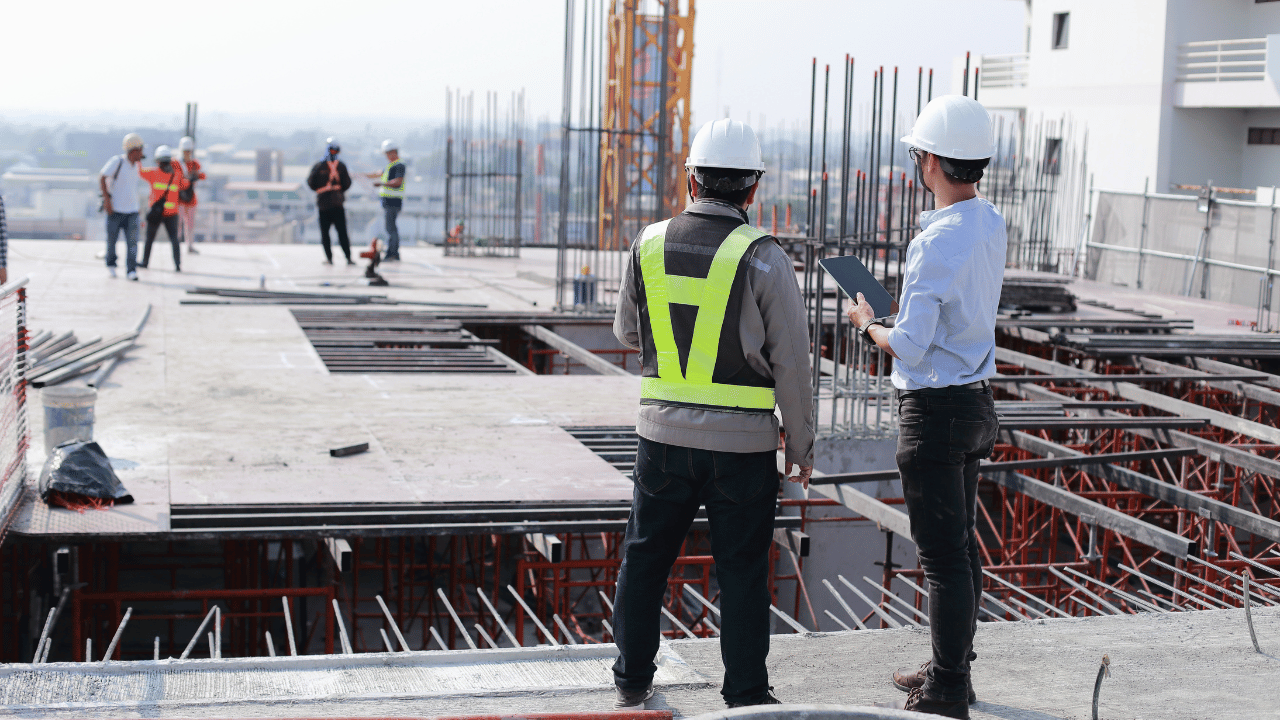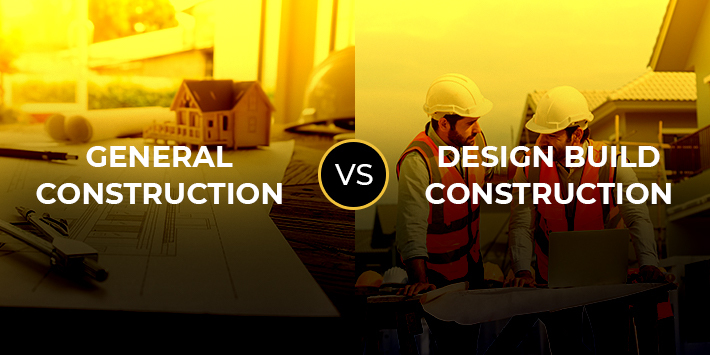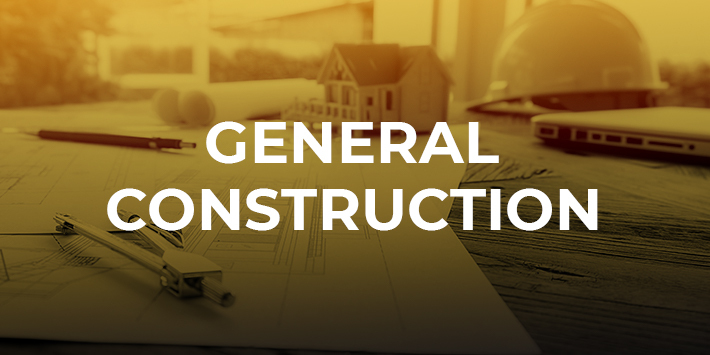
Design Build Construction vs General Construction: A 2024 Guide
John Souffront

General Construction vs Design Build Construction:
Do you ever wonder how a vacant plot of the ground came to hold a complete building when you saw a retail center, hospital, or school?
Everyday structures have a complex construction process going on behind the scenes. It starts with design, then bidding, and finally building.
This procedure can be performed in various ways. For example, the Design and Build method is popular, along with the conventional approach.
Project owners seek to experiment with novel methods of planning, designing, and constructing their projects, which increases the number of design-build contracts with time.
Like traditional or general construction, design-build construction has merits and demerits. The situation at hand will be the deciding factor in whether traditional or design-build construction is needed.
In this blog, we will differentiate between general construction and design-build construction and discuss their elements, merits, and demerits. Without further ado, let’s begin.
General Construction: An Introduction
It makes sense that we first understand what general construction is and then gradually move towards design-build construction.
There are three stages in general to the traditional method.
The traditional approach starts with design. Before any construction is done, the client collaborates with a firm that specializes in architectural design to lay out the building design. The designers are not involved in any aspects of the construction process other than those related to the design, in contrast to a design-and-build agreement.
Traditional contracts separate the organizations in charge of the various project components. Once a design is completed and the project owner authorizes it, the parties move on to the bidding phase.
Depending on the finished design, the client will receive proposals from several outside contractors during this phase. In addition, the client must approve all the project specifics, including the construction expenses, in the proposals.
Following the project owner’s selection of their construction team, the various design and building organizations work together to execute the plans. The traditional approach organizes the project’s steps by dividing the groups in charge of each construction component.
Design Build Construction: An Introduction
One team completes the entire building process, from planning to building, under design build construction, a contemporary approach in the construction business.
Clients no longer need to collaborate with different architectural design teams to create floor plans, as was the case with general contracts.
The design build contract aims at streamlining project collaboration and communication for both the client and the construction crew.
As the project progresses, designing and building are frequently done concurrently. Therefore working with only one team may result in greater communication than working with different entities.
By selecting the complete project team prior to the commencement of the project, this strategy also streamlines the bidding procedure. In addition, the project owner will only need to deal with one person for all of their design and construction requirements, giving them greater control over project oversight.
Difference Between General Construction and Design Build Construction
The following are the main points of difference between traditional or general construction and design-build construction.
| Factor | General Construction | Design Build Construction |
| Time | Design and construction are sequential here, increasing project schedules | Construction overlaps design and reduces project schedules |
| Communication | Multiple communication channels | Single point of contact throughout the project |
| Cost | Initially unknown. Certain at a later stage | Costs are realized and fixed from initial design phase |
| Value Engineering | Occurs when you hire a firm | Occurs at the project onset |
| Risk | Risk of failure to perform by consultants or contractors remains with the client | With a single, united workforce, reduced risk and liability |
| Control | Owner retains authority over construction design and planning. | Less owner knowledge and resources are needed |
| Flexibility | Contract-heavy with little room for client-side modifications. Projects may take longer to complete, schedules and programs may alter, and costs may increase. | Client-side variants can be modified quickly and nimbly. Costs and designs are produced simultaneously. |
Essential Elements of a Design Build Construction
For a design build construction project to commence, there are three documents that one will require. Here they are:
Employer Prerequisites
The project owner outlines all of their needs for the project in this component. Even though the team will handle the design, the employer will still need to provide their expectations for the contractor to use as a benchmark when creating their proposal and quotation. It is because the contractor bases their work on what the customer anticipates seeing after the project is finished.
Any other documents that can aid the contractor in understanding the project, such as those relating to the soil study report, the local sewage system, and land ownership laws, may also be required by the employer.
Proposal by Contractor
The contractor will submit the project owner a proposal that includes a complete project breakdown based on the employer’s requirements. In order to meet the needs of the project owner, the design-build team specifies the scope of the design proposal, the materials required, the estimated time of completion of construction, the site layout, and other contract-specific details.
The contractor’s proposal is sent to the customer for approval and includes names, contacts, and pertinent information for contact tracing.
Contract Cost Assessment
The estimated project cost is shown in the Contract Sum Analysis, which is provided to the client for review. This document includes a complete description of every component’s cost and the project’s anticipated total cost.
The client may make changes based on the study of the contract cost in relation to their budget at this point. Following approval, billing arrangements and interim payments will be discussed between the project owner’s team and the contractor’s team.
Essential Elements of General Construction
The general construction route is a bit different, and is more popularly known as “Design, Bid, Build”. The following are the crucial elements of general construction.
Design
The project owner collaborates with an architectural design company to develop the building design, providing the requirements and final appearance of the overall structure. The budget, timetables, and implementation planning happen during the design phase.
Bid
Independent contractors compete for the project, presenting offers to the client, who will use them to decide which company to hire. In addition, the organization must provide a comprehensive list of all needs, costs, timelines, and other information because contractors normally compete in a single stage.
Build
The hiring of a contractor initiates the building phase of the project. During this stage, the structure begins to take shape physically.
The project should go without interruption during construction, even though elements and designs may alter.
Benefits and Limitations of Design Build Construction
Benefits
The following are some note-worthy benefits of design build construction for every project owner.
Better communication with low-risk
This approach simplifies the owner’s management of risk by cutting down the number of contact points. As the primary point of contact and responsibility, the design-builder is now the only party to contact. The project owner avoids the risk of having to sue numerous people or of being unable to pinpoint the responsible party for a specific flaw or error. Nevertheless, it emphasizes the project owner’s potential remedies because only one party may be liable.
Saving time
This tactic reduces the delivery date by merging the design and construction parts of a project. Because of this, the building’s design can be developed gradually as the building process advances. However, since the project owner is pressed for time, it is appropriate in those situations.
Economical
The project owner will save money by utilizing this strategy. When a person employs a single company, there are fewer overhead costs to bear, more straightforward and fewer managerial and legal tasks to complete, a more negligible risk of a lawsuit, and fewer parties to deal with.
Creativity and a holistic construction approach
This strategy encourages the design-builder to use the most creative and economical methods to organize and construct the building. Only because the project team meets early on to address potential issues that might later arise, including the designer and the contractor, is it even conceivable. Furthermore, it lessens the likelihood of design faults, which are more difficult and expensive to correct. Additionally, the person can modify the design to match the conditions of the actual site since one person is both the designer and the contractor.
Limitations
With benefits, there exists some limitations too, for anything, and here they are for design build construction type.
Might not produce the expected result
Because there is no established design to use as a starting point, the project will likely not deliver the anticipated results. After all, both the design and construction processes are ongoing at the same time. As a result, the finished product might not be what the project owner intended, particularly if the employer’s requirements and the contractor’s proposal are not thorough enough to guarantee that the project owner and design-builder are on the same page.
Lack of experience
Because the company must show expertise in both designing and building, rather than just one of them, the design-competence builder’s level may also be affected. For instance, this can be very challenging when the project requires incredibly elaborate designs. Assume, for example, that a design-builder primarily focuses on construction rather than design. If that happens, they might be unable to create more complex designs or push themselves as far as possible with the project’s design. The design-builder does, however, occasionally subcontract out particular tasks. For example, the design-builder, primarily a contractor, could hire a designer as a subcontractor or hire one to assist them with the process.
Quality Problems for the Project Owner
A further potential effect of the Design and Build technique is that the project owner may experience poor quality in the final output. The designer, who frequently stands in for different viewpoints from the contractor during the construction process, typically interprets the project owner’s vision through the design. For instance, when the designer and builder are the same people, the architect’s concept could be biased in favor of the contractor because the two roles are no longer in balance. On the other hand, if the project owner lacks the technical expertise to oversee, they might be able to manage this if they hire a consultant or agency to help.
Benefits and Limitations of General Construction
Benefits
Here are some key benefits of general construction type.
Certainty
The project owner can be more confident in the costs and successful completion of the project because the design, budget, and project specifics are established in advance. The traditional method offers a solid foundation for all project stakeholders to follow, but the design-and-build process may lead to unexpected modifications midway through the project.
Organizing Individual Entities
By keeping each entity distinct, the client may be guaranteed the degree of competence for each entity, so they can concentrate on their areas of expertise rather than trying to be experts in everything by having everyone under one roof.
Limitations
Next, we have two key limitations of the general construction method.
Flexibility
Comparing the old process to the design-and-build method, flexibility after the tender is more challenging. It’s difficult to modify once the building and construction starts because every part of the project review and acceptance is done. During the planning phase, the customer must communicate any adjustments they have in mind.
In any other case, the project owner may consult with the parties concerned about any midway adjustments and provide legal documents to support those changes.
Collaboration
The various entities might or might not collaborate in a conventional fashion. Therefore, a collaboration between the different stakeholders could be complex, especially if their beliefs and methods are at odds.
The project owner must choose partners with the best potential for cooperation, given how they operate.
What to Do Next?
Once you select the method you will opt for, be it design-build construction or general construction, you will proceed towards partnering with the right people who do the job, meet your needs to the T, and prevent any hassle.
Apart from the construction phase, you must also complete a home foundation inspection. While the house might be great when it is built, the interiors and exteriors may become damaged over time, and if you don’t get an inspection and repair done in time, you can face severe consequences, which a home foundation inspection could prevent.
If you live in Miami-Dade, Broward, or anywhere else in Florida, you must get a 40-year inspection per the laws. This will ensure your property is safe and does not show any signs of damage for the next few years. You must get your property repaired before it becomes the next headline of a horrific collapse.
Concrete repair and concrete waterproofing are services most property owners get done every 8 to 10 years.
The End result?
Their properties were safe from receiving significant damages, and the property life wen up too.
Final Words
So, here was an in-depth differentiation between a general construction and a design-build construction process.
Not just that.
Going through a specific process and getting your house built is not the last thing you’ll have to do.
You must take inspections and repairs seriously, contact professionals, and be ready for them even if you have to do them in the future, not now.
Planning leads to preventing devastating incidents. That’s what you must do.
Souffront Construction and Engineering ranks among the top five construction and engineering firms, especially for design-build construction and 40-year recertification.
We are a team of expert general contractors, level II certified thermography inspectors, and structural engineers with a mission to construct top-quality properties and provide professional inspection service to prevent any property from even minor damage. Feel free to contact us to learn more about our services and how we can be the ideal pick for you regarding construction and inspection.
John Souffront
John Souffront is a seasoned leader in the construction and engineering industry, with over a decade of experience at the helm of Souffront Construction & Engineering. Known for his unwavering commitment to excellence and innovation, John has propelled his firm to the forefront of the field, delivering cutting-edge solutions for complex projects around the country.
Build Your Project
Ensure safety and compliance on your construction site with our experienced team. Call us today.
Contact Us



